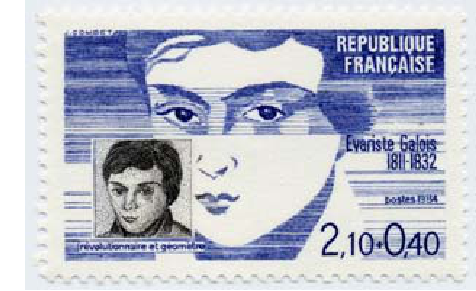Corollary 16.2.6 gives us a large number of finite fields, but we must be cautious. This does not tell us that all finite fields are of the form
\(\mathbb{Z}_p\) ,
\(p\) a prime. To see this, let’s try to construct a field of order 4.
First the field must contain the additive and multiplicative identities, 0 and 1, so, without loss of generality, we can assume that the field we are looking for is of the form \(F = \{0, 1, a, b\}\text{.}\) Since there are only two nonisomorphic groups of order 4, we have only two choices for the group table for \([F; +]\text{.}\) If the additive group is isomorphic to \(\mathbb{Z}_4\) then two of the nonzero elements of \(F\) would not be their own additive inverse (as are 1 and 3 in \(\mathbb{Z}_4\)). Let’s assume \(\beta \in F\) is one of those elements and \(\beta +\beta =\gamma \neq 0\text{.}\) An isomorphism between the additive groups \(F\) and \(\mathbb{Z}_4\) would require that \(\gamma\) in \(F\) correspond with 2 in \(\mathbb{Z}_4\text{.}\) We could continue our argument and infer that \(\gamma \cdot \gamma =0\text{,}\) producing a zero divisor, which we need to avoid if \(F\) is to be a field. We leave the remainder of the argument to the reader. We can thus complete the addition table so that \([F;+]\) is isomorphic to \(\mathbb{Z}_2{}^2\text{:}\)
\begin{equation*}
\begin{array}{c|cccc}
+ & 0 & 1 & a & b \\
\hline
0 & 0 & 1 & a & b \\
1 & 1 & 0 & b & a \\
a & a & b & 0 & 1 \\
b & b & a & 1 & 0 \\
\end{array}
\end{equation*}
Next, since 1 is the unity of \(F\text{,}\) the partial multiplication table must look like:
\begin{equation*}
\begin{array}{c|cccc}
\cdot & 0 & 1 & a & b \\
\hline
0 & 0 & 0 & 0 & 0 \\
1 & 0 & 1 & a & b \\
a & 0 & a & - & - \\
b & 0 & b & - & - \\
\end{array}
\end{equation*}
Hence, to complete the table, we have only four entries to find, and, since \(F\) must be commutative, this reduces our task to filling in three entries. Next, each nonzero element of \(F\) must have a unique multiplicative inverse. The inverse of \(a\) must be either \(a\) itself or \(b\text{.}\) If \(a^{-1} = a\text{,}\) then \(b^{-1}=b\text{.}\) (Why?) But \(a^{-1} = a \Rightarrow a \cdot a = 1\text{.}\) And if \(a \cdot a = 1\text{,}\) then \(a \cdot b\) is equal to \(a\) or \(b\text{.}\) In either case, by the cancellation law, we obtain \(a = 1\) or \(b = 1\text{,}\) which is impossible. Therefore we are forced to conclude that \(a^{-1} = b\) and \(b^{-1} = a\text{.}\) To determine the final two products of the table, simply note that, \(a \cdot a \neq a\) because the equation \(x^2=x\) has only two solutions, 0 and 1 in any field. We also know that \(a\cdot a\) cannot be 1 because \(a\) doesn’t invert itself and cannot be 0 because \(a\) can’t be a zero divisor. This leaves us with one possible conclusion, that \(a \cdot a = b\) and similarly \(b \cdot b = a\text{.}\) Hence, our multiplication table for \(F\) is:
\begin{equation*}
\begin{array}{c|cccc}
\cdot & 0 & 1 & a & b \\
\hline
0 & 0 & 0 & 0 & 0 \\
1 & 0 & 1 & a & b \\
a & 0 & a & b & 1 \\
b & 0 & b & 1 & a \\
\end{array}
\end{equation*}
We leave it to the reader to verify that
\([F; +, \cdot ]\text{,}\) as described above, is a field. Hence, we have produced a field of order 4. This construction would be difficult to repeat for larger fields. In section 16.4 we will introduce a different approach to constructing fields that will be far more efficient.
